General Info – summary.
This Tree with a trunk width up 30+cm wide & 20m high has strong, usually unevenly forked spines. Bark is smoothish. The deciduous compound Leaves have 2 opposite leaflets with off-centre midribs and asymmetric bases. The small, greenish-yellow, bisexual, regular, scented and 5-merous Flowers are in axillary umbels. Ten anthers surround the superior ovary. The 5cm long Fruit is a single seeded drupe.
Description.
Balanites maughamii subsp. maughamii.
Previous Names: Balanites dawei.
SA Tree No. 251.
Common names: (Afr) Fakkelsaadboom, Groendoring, Lemoendoring. (Eng) Green Thorn, Torch Wood, Torch-fruit Tree, Y-thorned Torchwood. (siSwati) Liphambo, Umnunu. (isiZulu) Iphambo, Ipamu, Ugobandlovu, Umnulu. (Xitsonga) Nnulu.
Family: Zygophyllaceae. This family of flowering plants has about 22+ genera and 280+ species. There are about 8 genera and 47 species in southern Africa, and these may be trees, herbs or shrubs. These includes the genus Balanites. The simple Leaves are usually opposite or nearly so and frequently have stipules and spines. Flowers have oil or nectar glands to encourage pollination by bees. The Ovary is superior and the style and stigma are usually simple. The Fruit is a capsule or a berry. Most species grow in saline or desert environments and are mainly shrubs or small trees.
Name derivation: Balanites from Greek for acorn-shaped – referring to the fruit. maughamii – named after Reginald Charles Fnlke Maugham. He was the British Council to Lourenco Marques – now Maputo. He first collected the plant in southern Mozambique and sent it to Kew in 1911. He was a Fellow of the Royal Geographical Society. There are 4 species of the genus Balanites in southern Africa – including one in northern Namibia.
Conservation: National Status: L C (least Concern). Assessment: 2016 (V.L. Williams, D. Raimondo, N.R. Crouch, A.B. Cunningham, C.R. Scott-Shaw, M. Lötter and A.M. Ngwenya). Species decreasing due to poor tree recovery after bark harvesting.
Tree
The spreading Crown reaches up to 20m above the ground. These plants may occur in small colonies. The usually buttressed and strongly fluted older Stem/trunk – photo 562 is up to 30cm+ wide and Branches in mature trees are stable from just under 2m above the ground. Grey-green hairs may initially cover young branches that often form zigzag patterns. Some branches are fruit bearing with few or no Spines. When present the spines are short and thinner. The spines on non-fruit bearers have strong, thick and sharp spines that are up to 4cm long (photo 562). These usually unevenly forked spines (photo 564 – under Leaves) remain for some time. The light grey to yellowish brown Bark is relatively smooth and sometimes scarred by porcupines.
- 562 2014.09.08 Skukuza KNP. Photo: DAvid Becking.
Leaves
This usually deciduous tree has alternate compound Leaves that are hairy when young. Each leaf contains two oppositely arranged Leaflets (photo 565) and both lack stipules (basal appendages of the petiole). These leaflets are grey or olive-green and usually up to 8 x 5,6cm and each leaflet is ovate to almost round (photo 564). The leaflet Apex is pointed to rounded. The asymmetric Base is broadly tapering and has an off-centre Midrib. The Blade is entire (with a continuous margin, not in any way indented) and may be wavy (photo 564). Leaflets are initially hairy but the upper surface becomes hairless and smoother with age. The hairy Petiole (leaf stalk) is up to 4,5cm long. The short Petiolules (leaflet stalks) are up to 1,3mm long.
- 565 2014.09.08 Skukuza KNP. Photo: David Becking.
- 564 2014.09.08 Skukuza KNP. Photo: David Becking.
Flowers
The scented, bisexual and greenish, Flowers are up to 2cm wide and actinomorphic (Regular, symmetrical. Flowers are vertically divisible into similar halves by more than 1 plane passing through the axis). Each flower rests on a Pedicel (stalk of a single flower). Flowers are located in an axillary umbels-like (inflorescences in which flower stalks arise from a common point) Cymes (a broad, more or less flat-topped, determinate flower cluster, with central flowers opening first). The Calyx has 5 free, persistent Sepals – the outer surface of which is villous (provided with long and soft, not matted hairs). The Corolla has 5 greenish-yellow Petals which are slightly fleshy and imbricate (having regularly arranged, overlapping edges, as roof tiles). They are externally hairy and smooth within. A thick Disc (a more or less fleshy or elevated development of the receptacle) is present. The 10 Stamens have distinctive protruding; free Filaments inserted at the base of the disc. The Anthers have 2 pollen sacs which open through longitudinal slits. There is a single Pistil (a unit of the Gynoecium, the female element of the flower, composed of the Ovary, Style and Stigma) containing a superior, 5 chambered, globose (spherical or nearly so) Ovary. This ovary is hairy and partly imbedded in the disc. Each locule contains a single ovule. The Style is short and the Stigma is simple. (Jul-Oct).
Fruit
The Fruit is an oval to barrel shaped and usually 5cm long Drupe (a fleshy, 1-seeded indehiscent fruit with the seed enclosed in a stony endocarp; stone fruit e.g., peach). This drupe is yellowish when ripe and usually has 5 grooves on the upper half. Each fruit is up to 6 x 3cm and has a shell, which is brownish yellow and surrounded by a thin, bitter fleshy layer. The drupe is 1-seeded by abortion and falls when ripe. The fruit is edible but not sought after. Each Seed has 2 oily Cotyledons (seed leaves; primary leaves in the embryo) and lacks endosperm (the starch and oil-containing tissue of many seeds; often referred to as the albumen). (Sep-May).
Distribution & Ecology
These Trees are located in dry forest, open woodland, sand forests and sandstone outcrops. They also occur near water sources like riverbanks and around pans. Trees are found in Northern KwaZulu-Natal e.g. Mkuze Game Reserve, Mpumalanga e.g. Skukuza in KNP and Limpopo. They also occur in Swaziland, Zimbabwe and northwards through Mozambique (mainly central and south), Malawi and Tanzania. Elephants browse the Branch tips. Porcupines may tear and scar the Bark. Many mammals including baboons, monkeys, warthogs, bushpigs and antelope consume the fallen Fruit. (Sep-Mar).
Ethnobotany
Fruits placed in water can kill some parasites, snails, fish and tadpoles. Fruits have kernels (a softer, often edible part of a nut contained within its shell) containing a fine Oil. This oil burns with a very bright flame without odour, is said to equal olive oil and has good lubricative qualities. This good quality oil is edible, colourless and slightly bitter. Burning kernels are used as torches – hence the common name torchwood. The Stem of the tree contains steroidal saponins (distinctive glycosides with foaming characteristics) with an antifeedant (chemical agent that causes a pest such as an insect, to stop eating). The hard, dense and durable Wood is used to make sticks, stocks for guns, wooden bowls and handles for pangas (tools or weapons). Heartwood and sapwood are indistinguishable. The tree is easily grown from seeds – after the fleshy part has been removed. Local medicine makes use of Plant extracts. This tree has been cultivated in Egypt for over 4 000 years. For best results, plant seeds where you want the tree to grow. Planted trees may take up to 4 years to produce the edible Fruit.
References
Boon, R. 2010. Pooley’s Trees of eastern South Africa. Flora and Fauna Publications Trust, Durban.
Burrows, J.E., Burrows, S.M., Lotter, M.C. & Schmidt, E. 2018. Trees and Shrubs Mozambique. Publishing Print Matters (Pty) Ltd. Noordhoek, Cape Town.
Coates Palgrave, M. 2002. Keith Coates Palgrave Trees of Southern Africa. edn 3. Struik, Cape Town.
Lawrence, G. H. M, 1951. Taxonomy of Vascular Plants. The Macmillan Company, New York. Tenth Printing 1965.
Palmer, E. & Pitman, N. 1972. Trees of southern Africa. Balkema, Amsterdam, Cape Town.
Schmidt, S. Lotter, M. & McCleland, W. 2002. Trees and Shrubs of Mpumalanga and the Kruger National Park. Jacana, Johannesburg.
van Wyk, B. & van Wyk, P. 1997 Field guide to Trees of Southern Africa. Struik, Cape Town.
Williams, V.L., Raimondo, D., Crouch, N.R., Cunningham, A.B., Scott-Shaw, C.R., Lötter, M. & Ngwenya, A.M. 2016. Balanites maughamii Sprague. National Assessment: Red List of South African Plants version 2020.1. Accessed on 2022/09/13.
http://www.plantzafrica.com/plantab/balanmaugh.htm
http://florawww.eeb.uconn.edu/199900551.html
http://www.ispotnature.org/species-dictionaries/sanbi/Balanites%20maughamii%20subsp.%20maughamii
http://www.zimbabweflora.co.zw/speciesdata/species.php?species_id=132970
https://species.wikimedia.org/wiki/Balanites_maughamii
http://posa.sanbi.org/flora/browse.php?src=SP
http://biodiversityadvisor.sanbi.org/wp-content/themes/bst/keys/e-Key-20160604/Families/F_Kirkiaceae.html
https://www.merriam-webster.com/dictionary/antifeedant.

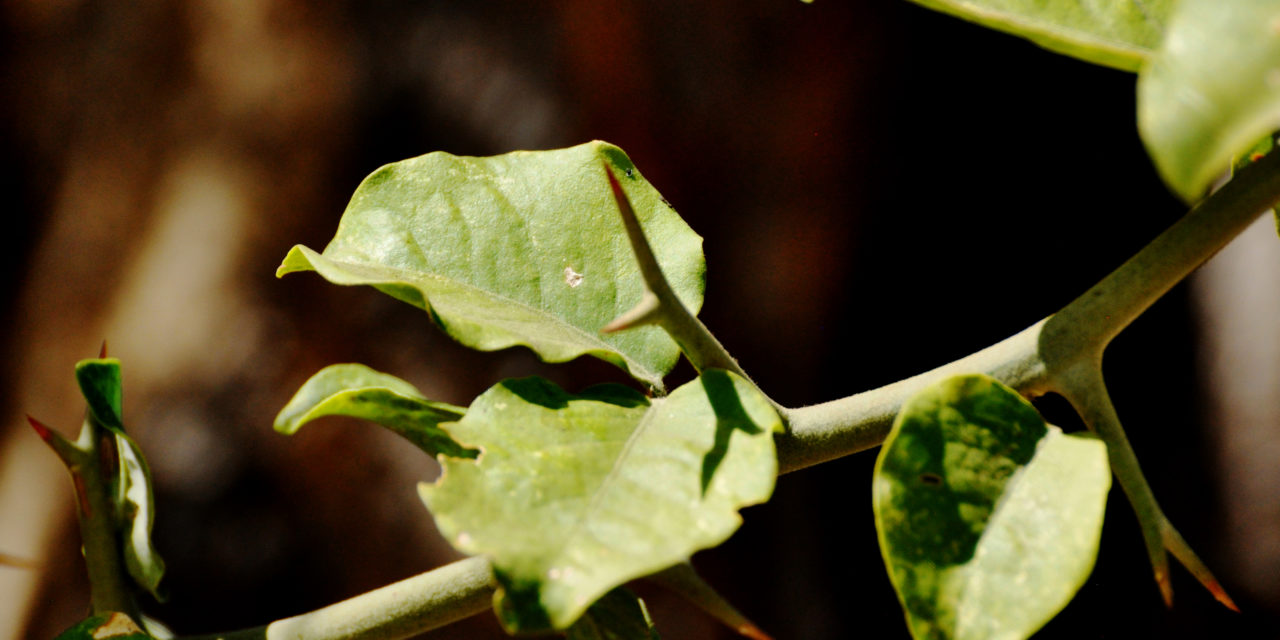
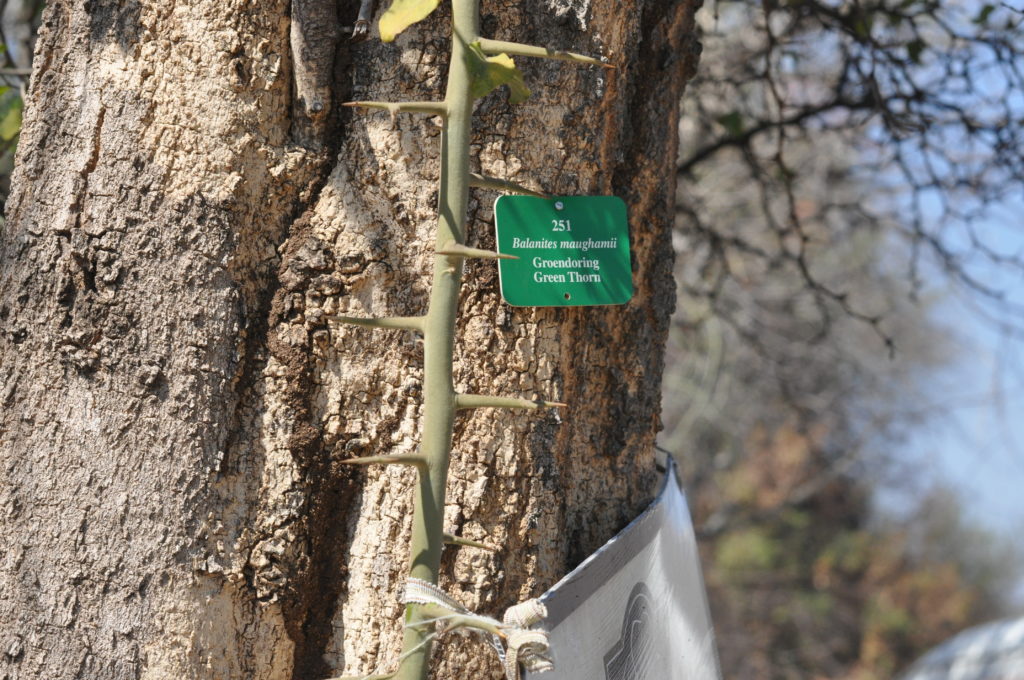
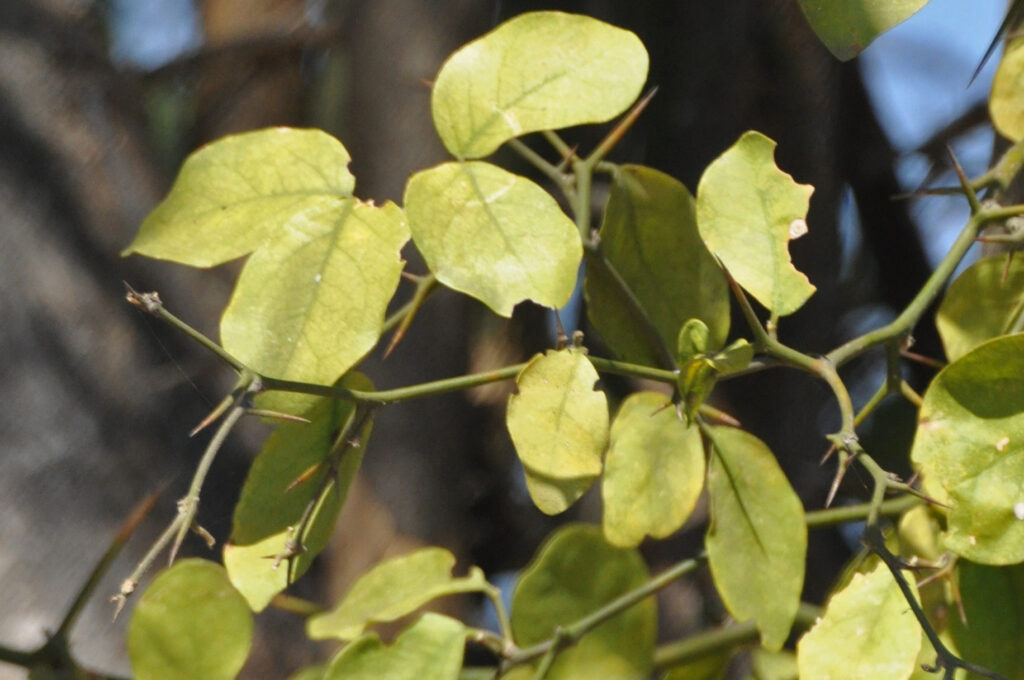
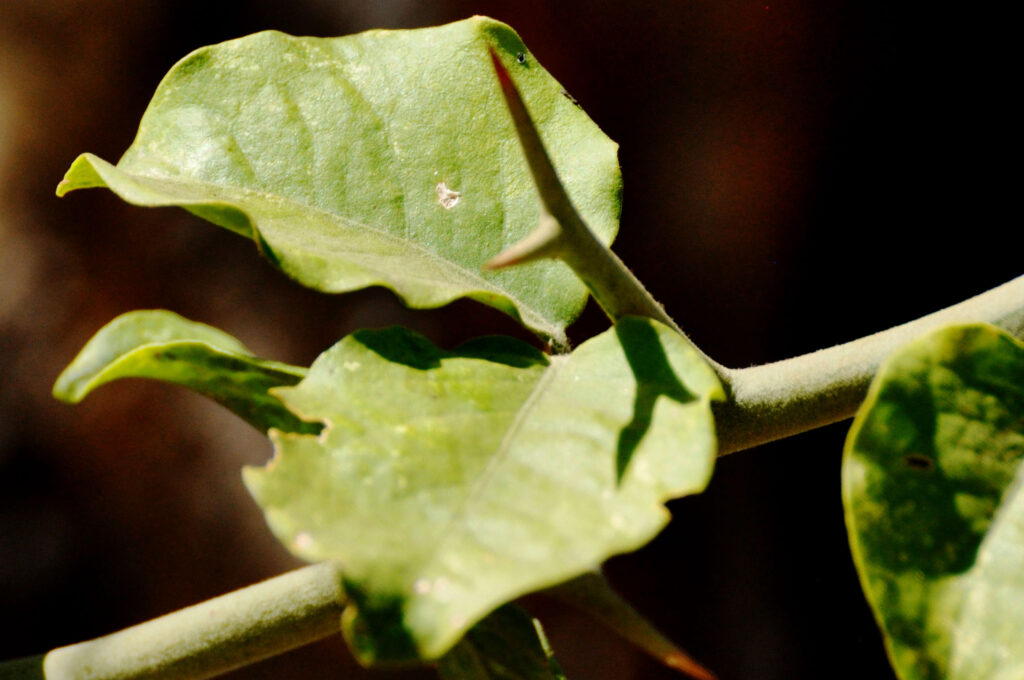
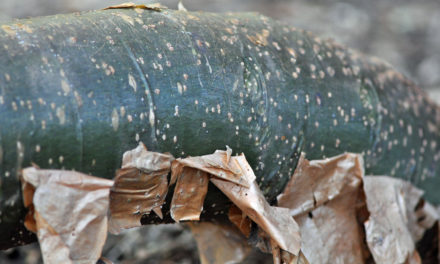
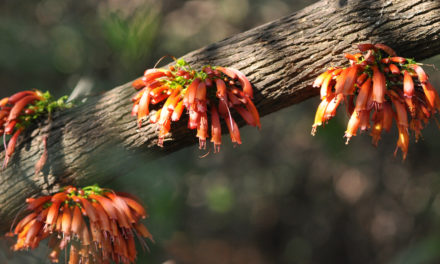
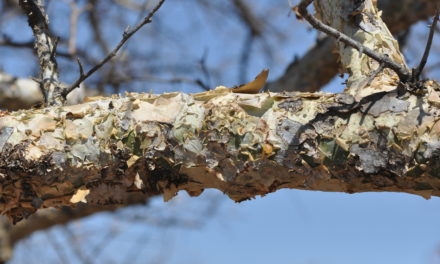
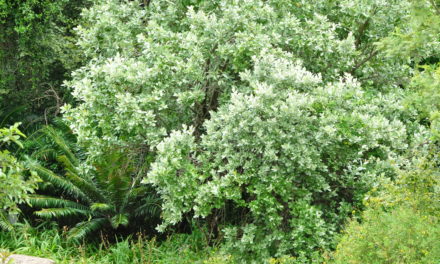
We have a group of Balanites maughamii growing at our camp in Balule NR in Limpopo. Suddenly a number of specimens of all ages have started dying for no apparent reason. Some trees are very large and established while others are still young. A number of trees in the immediate vicinity are still alive and seem to be doing well. No other species has been affected. There is no evidence of borer at all. Your comments or advice will be greatly appreciated as we really value these trees.
Greetings Ann
Not an easy answer. Are the trees getting sufficient or excess water? What is the condition of the water – nearby stream etc.? Find a recently died young branch, use a knife to remove a length bark and examine with a hand lens. Traces of parasites may be visible. Surviving branches and leaves – any visible problems, unusual insects etc.
Good luck and take care.
David Becking.